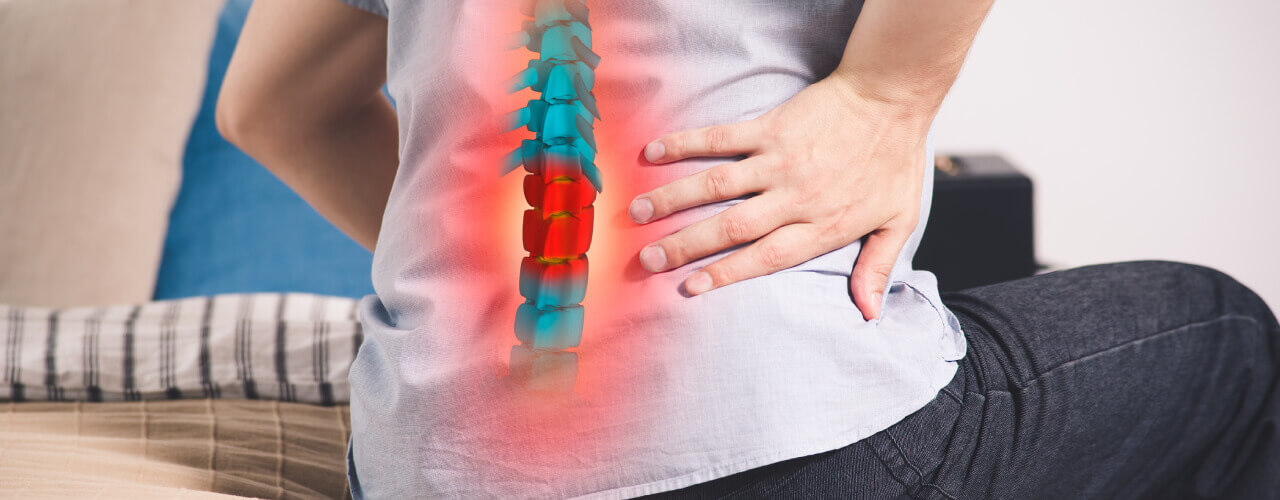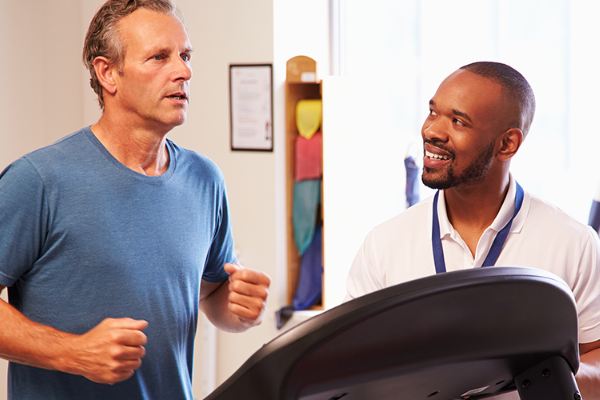You Could Relieve Your Herniated Disc Pains with Physical Therapy
Believe it or not, a herniated disc can occur anywhere in your spine. At our physical therapy clinic, we see disc herniations frequently among our patients with back, arm, and/or leg pain.
Strange neck pains, back pains, or extremity symptoms can indicate a variety of potential problems – including one or more herniated discs.
What can you do if you’re not sure whether or not you have this problem? What are your options if you have a herniated disc? These questions don’t have to add to your physical pain and confusion.
If you believe a herniated disc is causing your pain and dysfunction, please contact us right away to schedule an appointment with a physical therapist.
Our knowledgeable staff can assist you in determining the source of your symptoms as well as healing the injured disc for long-term relief.
What is a herniated disc?
Your spinal discs are squat discs of tissue that lie between the vertebrae. A disc consists of a fluid-filled center called the nucleus pulposus encased in an outer structure called the annulus fibrosus. This arrangement makes the disc both tough enough and spongy enough to absorb shocks.
Unfortunately, that toughness has its limits. Sometimes a disc will lose hydration over time, causing the nucleus pulposus to shrink. The disc loses its height, which stresses the spinal joints and may cause the disc to bulge outward. “Herniated disc,” “slipped disc,” and “ruptured disc” are all just different ways of describing the same physical problem.
Eventually, these changes can cause part of the annulus fibrosus to balloon and tear open; this is a herniated disc. Herniated discs can also occur suddenly due to an auto accident, workplace accident, or sports injury that traumatizes the spine.
How can a physical therapist help with a herniated disc?
Physical therapy has been shown to be effective in the treatment of herniated discs. If your symptoms are interfering with your daily activities or at work, or if they last longer than two weeks, we recommend seeing a physical therapist.
Physical therapy interventions such as spinal traction, corrective exercises, and non-invasive modalities such as electrical stimulation or diathermy can help you heal the injured disc, relieve pain, and prevent a painful injury recurrence.
If a surgeon has told you that you may need spinal surgery to fix the herniation, physical therapy may be recommended.
Before undergoing a spinal fusion or disc decompression procedure, many surgeons advise their patients to work with physical therapy to improve core strength and spinal health. This can improve surgical outcomes while lowering the risk of post-operative complications.
Interestingly, research shows that even “idiopathic” cases of back pain (conditions with no known cause) respond positively to physical therapy. In other words, even if it’s not entirely clear whether you have a herniated disc, our services can still help.
Symptoms of a herniated disc
Small soft structures that sit between the bones of the spine are known as spinal discs. Their main purposes are to absorb shock and improve spine mobility. On the outside, these discs are tough and fibrous, but on the inside, they are soft and gel-like.
When the disc’s tough outer layer (called the annulus fibrosis) ruptures, it causes a herniated disc. This allows the nucleus pulposus (the inner gel substance) to leak out. The inflammatory response caused by the ruptured disc tissue can compress nearby structures, such as joint receptors and spinal nerve roots.
A herniated disc is similar to a bulging disc; in the latter condition, the disc tissue may protrude out of place but will not rupture.
Interestingly enough, not all herniated discs will lead to pain (especially because the discs themselves are relatively low in innervation and vascularization). However, when a herniated disc does cause symptoms, these symptoms often include:
- Pain that worsens with forward flexion or prolonged sitting—forward flexion may also cause the pain to “peripheralized” or move further away from the spine
- Arm or leg pain, numbness, tingling, and weakness (if the herniated disc
- compresses on an adjacent nerve root that innervates the affected limb)
- Pain that improves or “centralizes” (moves toward the spine) with spinal extension, such as when lying down or lying prone
- Neck or back pain, stiffness, and muscle spasms at the level of the injured disc
Risk factors for developing a herniated disc
A physical therapist can help you determine if you have a herniated disc by assessing your medical history and lifestyle, in addition to analyzing your symptoms and performing various tests and measurements.
We’ll look for risk factors known to be linked to herniated discs, including:
- Acute trauma, e.g., auto accident or fall
- Male gender
- Age between 30 and 50
- Frequent bending, heavy lifting, or twisting
- Physically demanding occupation
- Smoking
- Obesity
What to expect with physical therapy for a herniated disc
If you’re suffering from a herniated disc or pressure on your sciatic nerve, your doctor may refer you to a physical therapist. Your therapist will do a thorough examination for you and create a specialized treatment plan that will directly address the pain associated with your condition.
Physical therapy might include massage, ice or heat therapy, pelvic traction and ultrasound, and of course, stretching exercises.
Physical therapy can play a massive role in getting on the road to recovering from a herniated disc. It entails a holistic approach with active and passive treatments. A physical therapist will not only provide pain relief for you, but they’ll also be able to teach you how to prevent this kind of injury in the future.
Call our clinic to find pain relief today
Are you struggling with the pains of a herniated disc? Consult with a physical therapist today to get started on the path toward pain relief! We’re here to support you on your journey to feeling your best.


